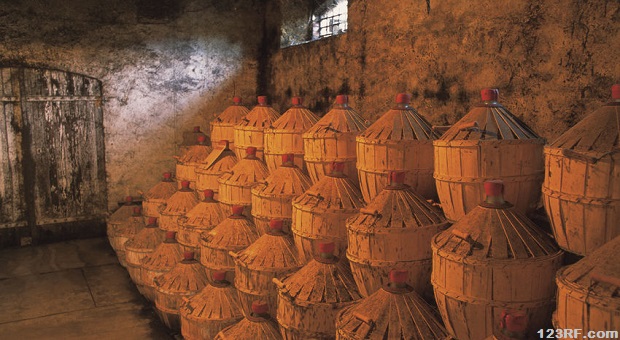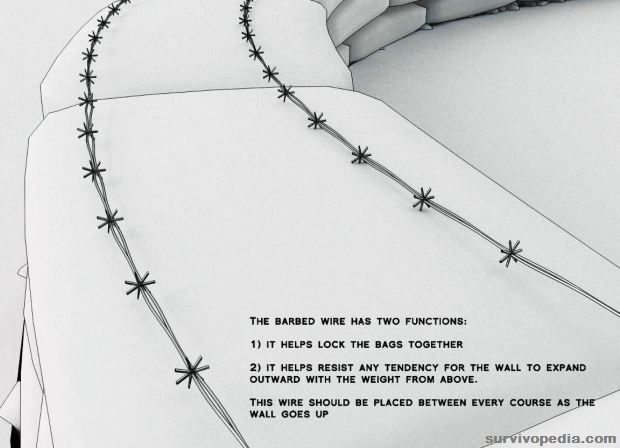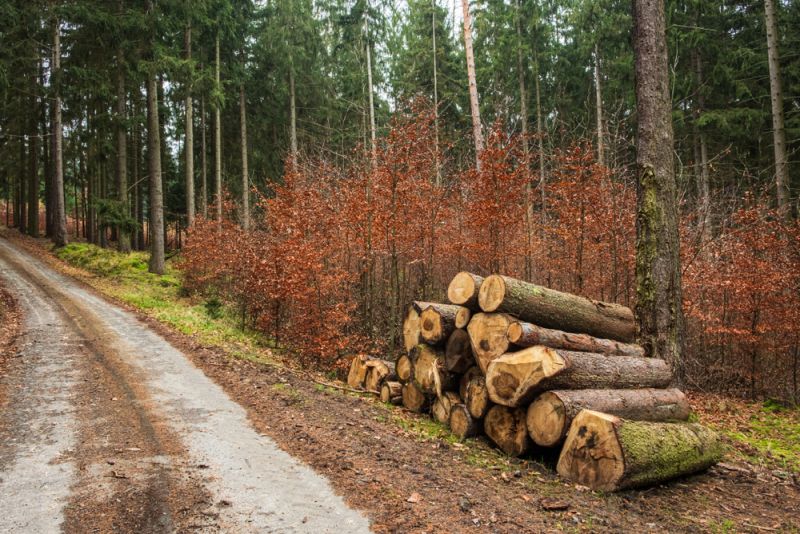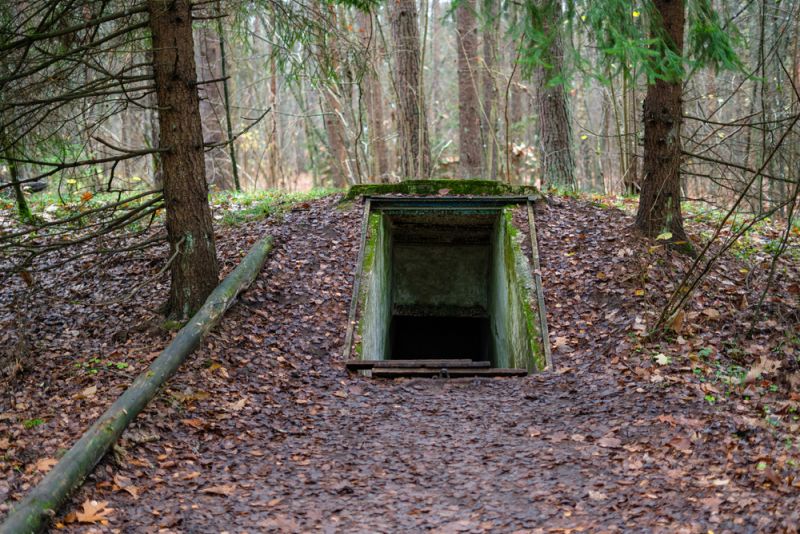When it comes to preparing for a major disaster or just surviving nowadays crisis, storing food, weapons, medicine, and other goods will be difficult in both urban in rural settings. No matter how much you may try to disguise your property, set up traps, or plan for bugging in, there is no replacement for a well hidden and well stocked survival cellar.
Individuals that currently have unfinished cellars with dirt floors or just crawl spaces under the house may be best able to make some of these modifications. Alternatively, if you cannot dig under the house safely, then you can build a cellar separate from any building and then find ways to disguise the entrance.
Choosing the Best Place for a Survival Cellar
Your survival cellar should be on high ground and as far as possible away from conduits, drains, or anything else that might cause a flood. That being said, if you are planning to live in the cellar without leaving it for weeks or months, you should try to find an area where you can easily reach an underwater stream.
Try to locate the cellar in such a way that the underground water source will not flood the cellar, yet you can still dig through and use a pipe and valve to get the water into the cellar in a controlled way. Some other places where you may be able to build something of a survival cellar include:
- Old cave systems with well hidden entrances or areas where you have to climb down to get to the cellar area.
- Old mine, bunker, well, and cistern sites where you can shore up the walls or build sideways.
- Abandoned underground subways or other areas where people are not likely to look for you or your cache.
Important Things to Do
During the process of planning and building a survival cellar, it is very important to think about what you will use the cellar for and how much room you will need for each activity. Here are some things you should incorporate into each plan:
- Make sure the structure is strong enough to build downward with disguises on each floor.
- Be able to extend the cellar underground without needing to go to the surface or use complex tools.
- Have multiple entrances and tunnels on and off your property.
- Be able to supply water and remove wastes without being detected.
- Take advantage of passive heating and cooling methods.
- Make sure there is enough room to store food, ammunition, weapons, medicine, and other survival goods.
- Leave enough room to grow food using hydroponics.
- Reserve an area for growing mushrooms, edible moss, and low light edible algae.
- Look for ways to install power generating features and lighting sufficient to grow crops and carry on daily living activities.
- Think of the cellar as your future home if it becomes impossible to bug out and bugging in becomes too dangerous.
- Choose building materials that are durable and easy to repair if needed.
- Consult with engineers and architects to make sure that your building design is sound and will remain safe in earthquakes, floods, and other situations.
Things You Should Avoid
It is very important to realize that your survival cellar may wind up being used for many functions, and may also become your home for decades under some circumstances. Lack of proper planning and building protocols now can truly wreak havoc later on when you need your cellar to be in top form. Here are some things you should avoid:
- Do not start building your survival cellar without a viable budget.
- Do not cut corners or try to use cheaper options just to save money.
- Do not do the work yourself if you are not qualified or do not have adequate resources to do the job.
- Do not believe that your current cellar is good enough just because it is in good shape or you have already started putting supplies there.
Survival Decision Point: Using Earth Bags to Build Your Cellar
If you cannot take advantage of caves or existing structures, then you will need to find some way to construct the walls of your cellar. A number of people today are taking advantage of earthbags to build cellar walls and reinforce them. Across time, military bunkers and many emergency structures have been constructed using similar earthbags.
All you will need are some strong sacks and plenty of soil or rock (not sand). Typically, you can build an earthbag cellar by layering the earthbags like bricks, and then use wire and plastic sheeting for reinforcement and dampness control.
While these materials are all inexpensive and easy to obtain, you should still discuss your plans with an architect or contractor familiar with earthbag cellar construction. In particular, you will need to know how to setup the curvature of the cellar walls and create braces within the entire layout for the roof.
Things to Keep in Your Survival Cellar
Once your survival cellar is built, you will need to start stocking it. Aside from the usual survival items such as food, water, weapons, ammo, medicines, seeds, tools, fuel, and how-to books, it is also important to store the following:
- Materials to triple the size of your cellar plus repair all of the major parts.
- Tubing, valves, and other materials to help manage sewage and water needs.
- Equipment to control air quality and provide lighting.
Building a survival cellar is very different from simply storing supplies in a pre-existing structure. In particular, you may need to live in your cellar for weeks or months as well as manage a number of emergencies that may come up during that time.
If you cannot afford to store away large quantities of food and water, building in lighting and water features combined with earthbag construction may offer you the best chance to obtain a relatively inexpensive cellar that will meet all of your survival needs.
This article has been written by Carmela Tyrell for Survivopedia.











Silas longshot | September 19, 2014
|
An interesting angle may be to do an earthbag thing along the lines of how Eskimo people construct an igloo…..as you dig down, put the displaced earth into the bags to accelerate the process…that way you only need to dig half as deep, generally speaking, because you’re creating your walls as you dig out your ‘cellar’. Rather like a ‘sodbuster’ homestead of long ago.
James Stewart | September 19, 2014
|
I was thinking the same thing right before I read your post Mr. Longshot. Great mind. Was also thinking about areas not far from home where there are escarpments that make access to the front door not for the timid!
michael obrien | September 19, 2014
|
All good ideas but a bit hard when you are older or don’t enjoy good health .
Dennis | September 20, 2014
|
Time, money and extreme effort needed, along with travel to a different and secure, and secret location. Who did you think you would help?
Pingback:5 Clever Tips For Building A Good Cellar | TheSurvivalPlaceBlog | September 21, 2014
|
James Burnette | September 22, 2014
|
I’m thinking about making mine as simple and quick as possible. Dig a hole and run logs across the top. Cover with dirt. Put shelved in the walls and be done.
radarphos | October 5, 2014
|
James,
How tall are you? Construction workers digging trenches, like 5 feet deep have died by suffocation, when the walls caved in, trapping them, and pushing tremendous weight against the worker’s chest making it difficult to breath and impossible to free self from. If kids fall into your hole and it caves in, your next home will be a prison; though the worst prison is within self when forced to live with major regret for hazards we create for self/others. In most USA places you have to have wall support; and in construction of trenches (even for burying pipelines) workers must now build wall support to protect against a cave-in in their work area. The only safe hole for short-term use is the fox-hole, about two feet deep (and covered as you wish) that kept plenty of soldiers under bullets and shell shrapnel, besides eliminating their body profile from view. Add a swale if rainwater would flow into your hole. The only workable holes that I have seen were built into gypsum (soft rock). I visited many of them in Iraq (1991). Entries were covered with plywood that was wrapped in burlap, or had “sand” glued to the top surface.
Pingback:Store Veggies For Long Term Survival | Survival skills, survival guns, survival guide | November 13, 2014
|
Michael Daugherty | November 15, 2014
|
Any suggestions for controlling the humidity in a root cellar?
Pingback:Survival Defense For Uncommon Shelters | From the Trenches World Report | November 17, 2014
|
gale | January 12, 2015
|
one thing I didn’t see mentioned in the article or comments, is ventilation, in the 60 people were building fallout shelters, and thing that was most forgotten was having a good ventilation system, one that is manual as well as powered. Otherwise you only built an expensive coffin.
Pingback:DIY Projects: 15 Ideas For Using Cinder Blocks | Survival skills, survival guns, survival guide | May 26, 2015
|
Pingback:DIY Projects: 15 Ideas For Using Cinder Blocksdisasterdefense.us | disasterdefense.us | May 26, 2015
|
Pingback:DIY Projects: 15 Ideas For Using Cinder Blocks | The Prepper Dome | May 28, 2015
|
Pingback:The Top 9 Most Nutritious Food For Your Survival Garden | Survival skills, survival guns, survival guide | August 9, 2015
|
Pingback:The Top 9 Most Nutritious Food For Your Survival Gardendisasterdefense.usdisasterdefense.us | disasterdefense.us | August 9, 2015
|
Pingback:The Top 9 Most Nutritious Food For Your Survival Garden | August 15, 2015
|
Pingback:DIY Projects: 15 Ideas For Using Cinder Blocks - Prepper Ways | February 11, 2016
|
Abdul Latif Sultan | June 18, 2016
|
1. How do we breath inside?
2. What about elderly fellows in the house who even find it difficult to survive in a normal condition?
3. Possible, we have CCTV cameras which are battery operated & could help us see what’s going on up there?
4. While being underground, we need to call up somebody & inform them that we’ve gone underground & need their help, in sort, an SOS to our keens, how do we do that for there might not be any network available beneath?
How about storing dry fruits & grains (peanuts etc) which can last long & can at least be a help for survival?
5. What all “must” medicines do we require to store in?
I’m asking those questions because in India we see a rising danger of mob’s attack.
They attack any house during the communal violence, rape women, kill all the family members & set ablaze the house. I too survived a similar incident during a riot in the year 2002 but that was because of the huge like minded surrounding societies.
Pingback:Leaky Cellar 101: What You Need To Know | Survivopedia | October 27, 2016
|